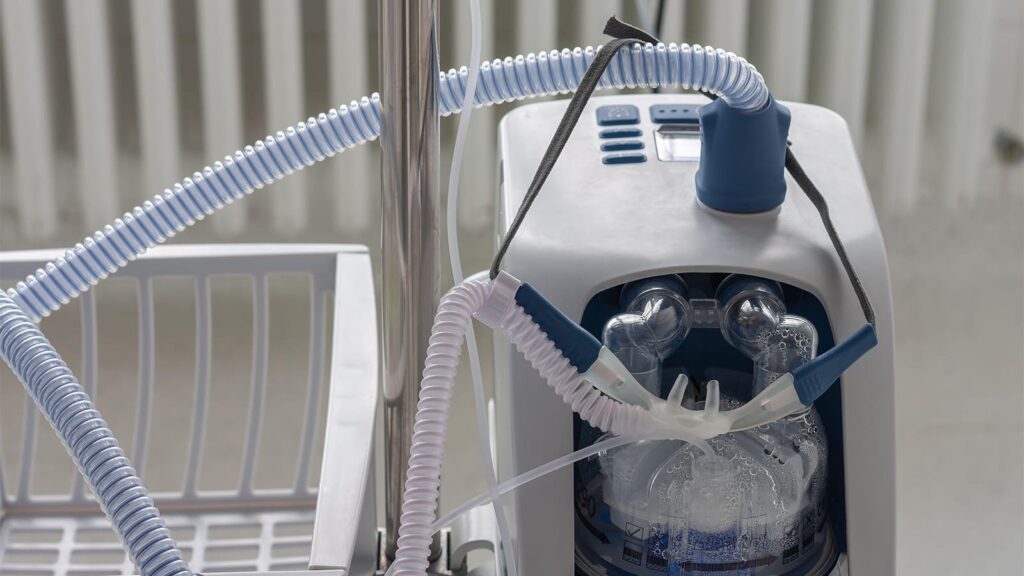Transitioning from an intensive care unit (ICU)-only high-flow nasal cannula (HFNC) protocol to a weight-based non-ICU HFNC protocol was associated with reduced ICU admission rates for hospitalized children with bronchiolitis, according to a retrospective cohort study.
In this cohort of 18 children’s hospitals, transitioning to a weight-based HFNC protocol was associated with a 6.1% decrease per year in ICU admission, a 1.5% reduction per year in use of noninvasive positive pressure ventilation (NIPPV), and a 2.5% immediate increase in NIPPV use compared with the ICU-only group, reported Robert J. Willer, DO, of the University of Utah School of Medicine in Salt Lake City, and co-authors.
There were no differences in mean length of stay or the proportions of patients who received invasive mechanical ventilation between groups, they noted in JAMA Network Open.
“It is important to consider alternative explanations for the association between a decrease in ICU admissions and weight-based HFNC protocols,” the authors wrote. “For example, it is possible that changes over time in bronchiolitis viral etiologies or decreasing illness severity could also affect ICU admission rates for children hospitalized with bronchiolitis. For either of these factors to explain the findings, viral etiologies and/or illness severity would have to be fundamentally different at hospitals with ICU-only versus weight-based protocol HFNC use.”
HFNC is frequently used in pediatric patients who are hospitalized with bronchiolitis, with a 2023 study showing that more than 50% of patients are treated with HFNC. Use of HFNC has expanded to outside of the ICU, and over time, the protocols that dictated the initial ward-based HFNC applied flow rates shifted from being based on age to being based on weight.
Willer’s group explained that previous studies were unable to measure the effects of these new protocols, and with increases in both ICU admission rates and hospital costs for pediatric patients with bronchiolitis, their study is a “timely” attempt to address existing gaps in research.
They used data from the Pediatric Health Information Systems database on 18 children’s hospitals and included patients who were hospitalized with a diagnosis of bronchiolitis from January 2010 through December 2021.
The study included a total of 86,046 patients with bronchiolitis; 47,336 were from 10 hospitals in the ICU-only cohort (mean age 7.6 years, 58.8% boys) and 38,710 were from eight hospitals in the weight-based protocol cohort (mean age 7.7 years, 59% boys).
While mean age and sex were similar between the two groups, the ICU-only group had higher proportions of Black (26.2% vs 19.8%) and non-Hispanic (81.6% vs 63.8%) patients than the weight-based protocol group. The ICU-only group also had more patients with governmental insurance (68.1% vs 65.9%, respectively).
In the weight-based protocol cohort, there was a 4.2% reduction per year in ICU admission and a 4.2% immediate increase in NIPPV use.
For the ICU-only cohort, there was a 1.8% increase per year in ICU admission, a 2.5% increase per year in NIPPV use, and an immediate increase of 1.6% in NIPPV use.
Willer and team noted that their use of administrative data for this study may have led to a risk of misclassification for certain variables, including outcomes. Other potential limitations included the fact that only children’s hospitals were included, making generalizability to other settings unclear.
Disclosures
Willer reported no conflicts of interest.
A co-author reported receiving a grant from the Agency for Healthcare Research.
Primary Source
JAMA Network Open
Source Reference: Willer RJ, et al “Transition to weight-based high-flow nasal cannula use outside of the ICU for bronchiolitis” JAMA Netw Open 2024; DOI: 10.1001/jamanetworkopen.2024.2722.
Please enable JavaScript to view the comments powered by Disqus.
Source link : https://www.medpagetoday.com/pulmonology/generalpulmonary/109258
Author :
Publish date : 2024-03-19 17:03:33
Copyright for syndicated content belongs to the linked Source.
